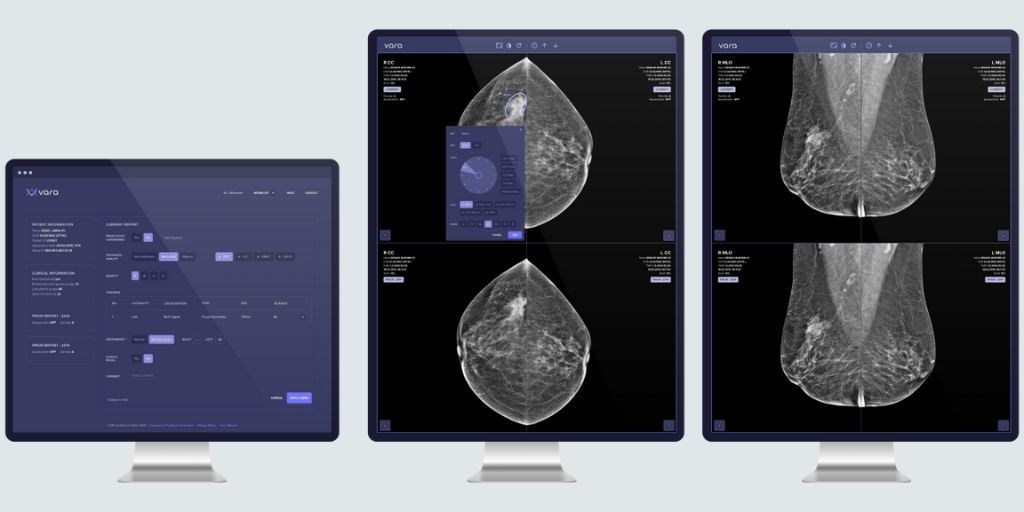
The Mammography Reference Center North in Oldenburg, Germany and Berlin-based deep tech company Vara, are today announcing the peer-reviewed findings of a large-scale study into the detection of interval cancers using AI. The study has been published in the European Journal of Radiology.
The study is based on the largest cohort of interval cancer cases to be assessed by an algorithm – the study researchers were primarily interested in understanding how many retrospectively visible cancers that were overlooked by radiologists could be detected and found by AI. 374 of the 2,396 interval cancers in the cohort were considered “false negative” and 468 “minimal signs”. When the algorithm was set at an operating level of 99% specificity (above the specificity of the screening program at 97%), it could detect and localise 27,5% (103) of the “false negative” and 12,2% (57) of minimal sign cancers. With decreasing specificity, more interval cancers could be detected. However, evaluating any AI at this specificity is necessary to demonstrate how AI can be brought into a screening program without inducing a detrimental impact on false positive rates. This is important to women participating in screening, as the emotional burden of a false-positive screening mammogram is high.
What’s more, for some of the remaining cases (2,8%) in the cohort, the AI was able to identify where cancers would later appear in the breasts of women who initially showed no signs of malignancy, but later went on to develop cancer during the period between screening rounds.
Catching interval cancers early
Like many European countries with an organized breast cancer screening programme, women in Germany between the ages of 50-69 are invited every two years for a mammogram. Among these women, some will have breast cancers found in the period between routine screening rounds. These cases are referred to as “interval cancers”.
To be classed as a “true interval cancer”, the cancers have to have appeared for the first time in the 24 months between routine screening appointments. In these instances, the women exhibited no signs of malignancy during their last mammogram but went on to develop cancer in the interval before their next mammogram.
Other interval cancers, known as minimal signs, refer to cases where there were early signs of cancer visible in a woman’s last mammogram, but because these signs were so subtle they were missed by the radiologists. “False negative” interval cancers are probably visible on previous mammograms but are missed by radiologists. These cases are in about 1 of 6 interval cancers and are deeply unfortunate, and a partly preventable aspect of breast cancer screening.
Study implications
The interval cancer rate is an important quality indicator for breast cancer screening. Compared to screen-detected cancers, interval cancers are more likely to have unfavorable prognosis, requiring more intensive treatment. Breast cancers detected earlier have better long-term outcomes and are easier to treat.
The study’s findings represent an opportunity to detect more breast cancers at screening, and to potentially reduce the number of advanced breast cancers at diagnosis.
Other similar studies that looked into AI’s performance at detecting interval cancers were performed on small retrospective datasets, or using specificity operating levels that would not be acceptable in clinical practice under European Guidelines.
Dr. Gerold Hecht, Head of Mammography Reference Center North said: “The introduction of AI can possibly increase the number of breast cancers detected at screening, but this depends on AI’s ability to detect cancers that would otherwise be overlooked or missed by radiologists during screening. We evaluated the potential of Vara to prevent interval cancers before they occur, and showed promising results.”
Danalyn Byng, Clinical Research Lead at Vara said: “Because an interval cancer diagnosis represents a significant detriment to women’s quality of life and well-being, it is important for any AI solution to demonstrate an ability to detect and correctly localize a large proportion of these cancers at screening. Only then can AI have a meaningful impact for women at risk of breast cancer.”











